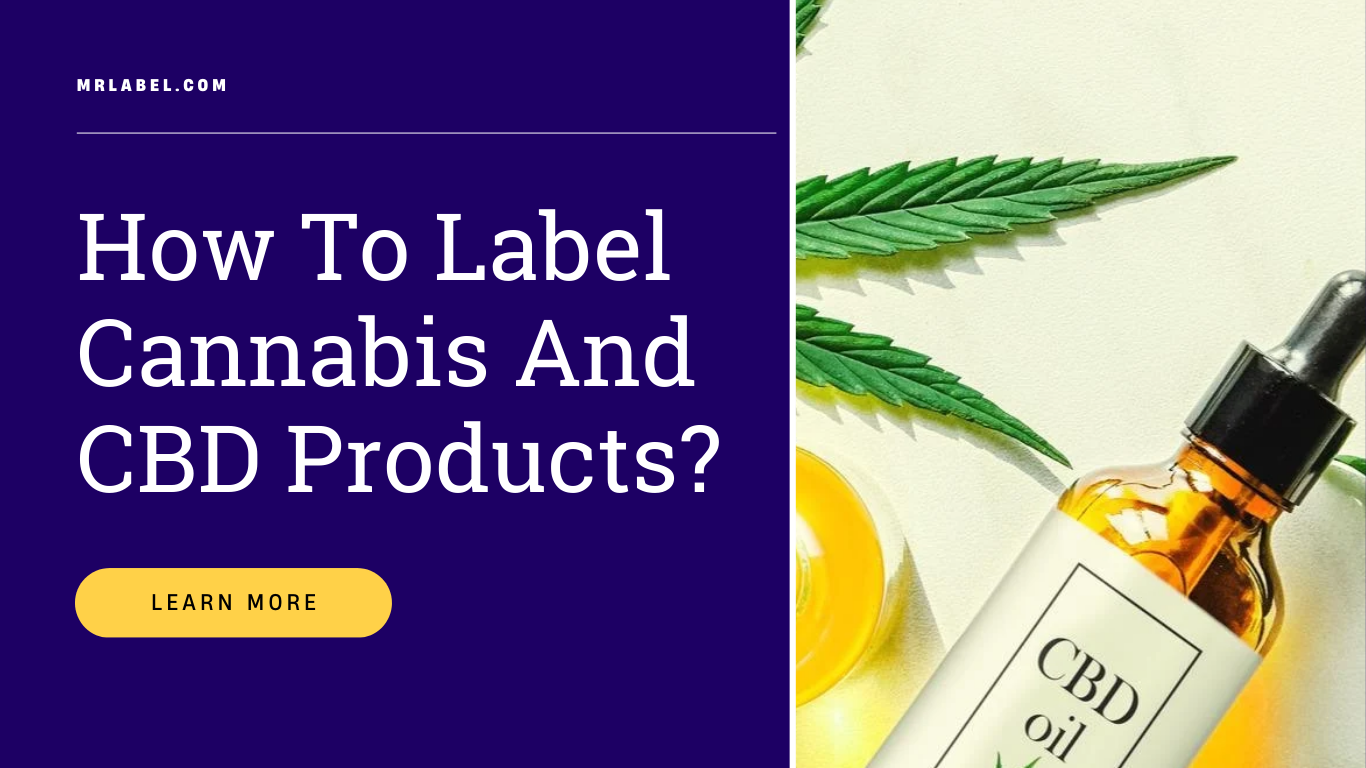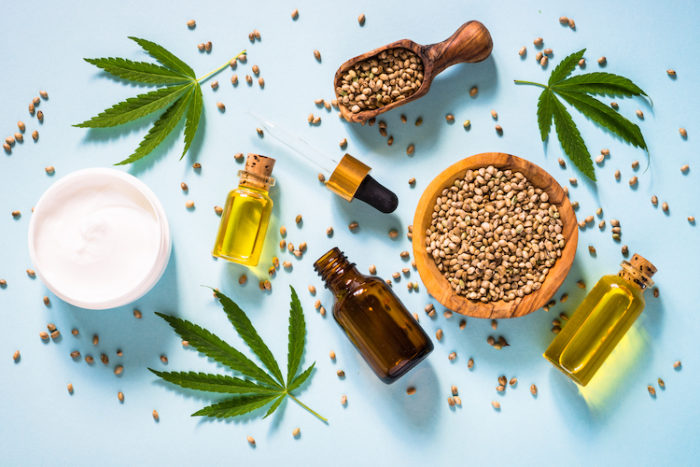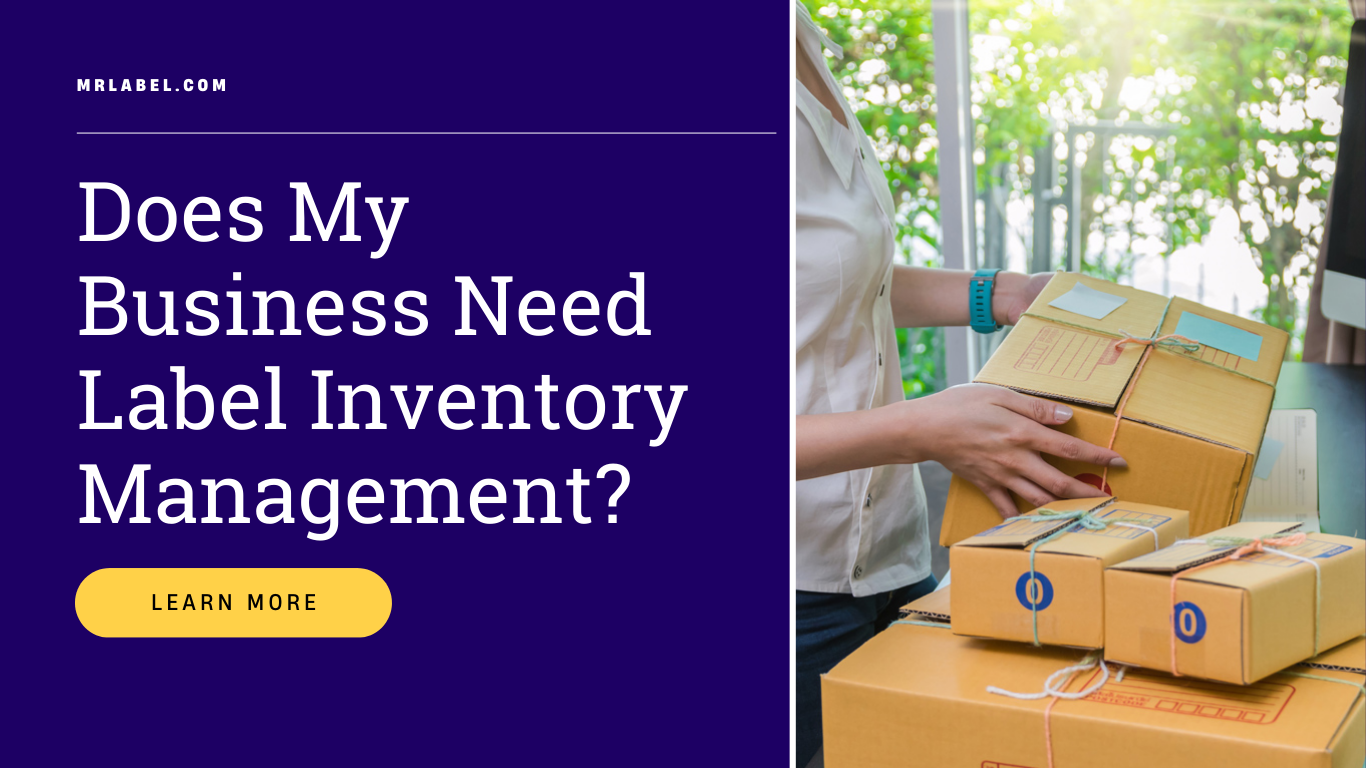If you took a trip to your local plaza or search “CBD near me” on Google, there’s a high probability that you’ll find a new business selling cannabis and CBD products that wasn’t even there 5 years ago. Perhaps you were ahead of the game and started your own CBD enterprise. If that’s the case, you’ve come to the right place! You already know that competition is fierce in this industry, but with professional label design guidance from M&R Label, your brand will stand out from the crowd.
If you’re new to the industry and wondering how to label cannabis and CBD products, keep reading! In this blog, we’ll examine how the cannabis and CBD industry is blossoming. Next, we will go over CBD and cannabis labeling requirements in detail. Then we’ll cover expert product packaging tips to help you take your brand to the next level.
The Cannabis Market is Flying High
Fun fact: Cannabidiol Market size accounted for $12.8 billion in 2021 and is estimated to grow with 21.7% CAGR between 2022 and 2028! More fun facts: 33% of American adults have used CBD once or more, and 64% of Americans are familiar with CBD. Needless to say, the cannabis market is a budding industry and won’t be going away anytime soon…
Even for states where recreational cannabis is not entirely legal, business is still booming. In 2018, a farm bill was signed that federally legalized hemp with a THC level less than 0.3% and its cannabinoids, including delta-8-THC. This created a grey area where even the states that have not legalized cannabis could legally sell delta-8. The lack of regulation on delta-8-THC has caused a “green rush” where numerous companies rushed to develop gummies, soft gels, and pre-rolls. Researchers have found the global rate of delta-8-THC searches appeared stable between 2011 and 2019. However, it increased by 257.0% from 2019 to 2020 and 705.0% from 2020 to 2021.
In states where cannabis is legal, it is up to their state governments to determine the rules and regulations for labeling cannabis products. These laws are regularly updated, so it’s super important to maintain compliance. Failure to comply can result in: large fines, product recalls, license revocation, and business closures. Nobody wants that! In order to avoid those headaches, let’s talk about a few CBD labeling requirements…
High Maintenance: Cannabis Label Requirements
Primary Panel: This is the customer facing panel. It will contain the first image a potential buyer will see. This is where you want your design creativity to shine through. The following information is required:
- Branding
- Name of the product
- Net weight
- Universal symbols or markings
- Batch tracking ID numbers
- Cannabinoid Content
Information Panel: The information panel is usually found on the back or sides of the product. This panel contains more detailed information about the product than the primary panel. QR Codes are often placed in the information panel for customers who want to learn more about your product and get the complete details. Common information on the information panel includes:
- Serial number
- Specific Dates
- Lab Information
- Contact Information/Name of distributor
- Indica or Sativa classification
- Plant strain name and type
- Percentages of THC, THCA, CBD, CBN, etc.
These are the typical guidelines for just about any consumable product that is legally available for purchase. However, since cannabis is a Schedule I substance, the US government has a few more regulations in place to keep us safe…
Flower to the People: Cannabis and CBD Label Regulations
The primary goal of all the laws and regulations regarding cannabis and CBD packaging is safety. You must be 21 years or older in states where cannabis products are legalized. Also, the packaging should leave no doubt about the product being anything other than cannabis. Similar to vape liquid and tobacco products, the packaging should not appeal to children in any way. That means no cartoon characters, toys, mascots, or any imitations of products sold to children. The packaging itself should also be childproof, to prevent children from opening and ingesting the product.
Cannabis and CBD laws differ in every state. Let’s focus on what Illinois law says for example: Beginning in January 2020, Illinois citizens over the age of 21, were granted the ability to purchase recreational marijuana from licensed dispensaries. Though the packaging and labeling requirements will continue to evolve, here are a few insights:
Warning labels should include the following statements:
- “This product contains cannabis and is intended for use by adults 21 and over. Its use can impair cognition and may be habit forming. This product should not be used by pregnant or breastfeeding women. It is unlawful to sell or provide this item to any individual, and it may not be transported outside the State of Illinois. It is illegal to operate a motor vehicle while under the influence of cannabis. Possession or use of this product may carry significant legal penalties in some jurisdictions and under federal law.”
- “Cannabis that may be smoked must contain a statement that “Smoking is hazardous to your health.”
- “Cannabis-infused products (other than those intended for topical application) must contain a statement “CAUTION: This product contains cannabis, and intoxication following use may be delayed 2 or more hours. This product was produced in a facility that cultivates cannabis, and that may also process common food allergens.”
- “Cannabis-infused products intended for topical application must contain a statement “DO NOT EAT” in bold, capital letters.”
Now that we’ve covered how to protect your business, let’s talk about how to protect your product!
Protecting CBD and Cannabis Products
One of your most important goals as a seller of cannabis is to find a way to protect your product. Your packaging needs to be able to withstand a multitude of scenarios – and those scenarios differ depending on the form it comes in. For example, edibles may come in wrappers to shield them from oily hands, whereas oils and tinctures will come in weather-proofed bottles to protect the product from the sun and other elements.
If your packaging is not designed to account for wide ranges in moisture, temperature, and humidity, it can cost your business big time. And let’s not forget you also want to protect the integrity of your label so your branding doesn’t get smeared or fall apart! Design your cannabis and CBD packaging to be resistant from:
- Fading
- Peeling
- High or Low Temperature
- Moisture
- Oil
- Chemical exposure
- Tampering
Breaking the Grass Ceiling: Brand Strategy
Product packaging goes hand in hand with branding. When designing your label, consider the form your product will be in. For gummies, many companies prefer a film pouch because it affords you plenty of real estate to add your logo, brand colors, custom font choice, and other designations specific to your brand. Make sure your product label design will easily fit onto any other forms of cannabis you sell, including tinctures, creams, and flowers. You’ll want your product labels to be consistent with your company’s branding for every form of cannabis you sell.
Our final word of advice? Partner with a professional labeling company that has the flexibility to provide design updates and adjustments in a timely manner. M&R Label achieves this through a process called variable data label printing. This process gives customers a fast, affordable solution for printing custom labels that require slight variances. Cannabis and CBD businesses across the country have trusted our expert labeling team for 30+ years because of our excellent customer service, fast turnaround times, and of course, high quality labels.
The cannabis and CBD industry continues to thrive in both Illinois and throughout the United States. At M&R Label, we serve clients throughout the country that offer a wide variety of cannabis products. Plus, we offer label inventory management to make sure you have the right amount of labels on hand at all times. Whether you’re selling tinctures, sprays, edibles, or gummies, your product deserves a label that meets regulations and grabs the attention of distracted consumers!




